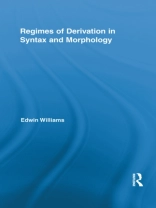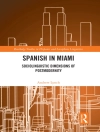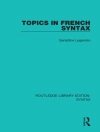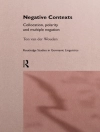Regimes of Derivation in Syntax and Morphology presents a theory of the architecture of the human linguistic system that differs from all current theories on four key points. First, the theory rests on a modular separation of word syntax from phrasal syntax, where word syntax corresponds roughly to what has been called derivational morphology. Second, morphosyntax (corresponding to what is traditionally called "inflectional morphology") is the immediate spellout of the syntactic merge operation, and so there is no separate morphosyntactic component. There is no LF (logical form) derived; that is, there is no structure which ‘mirrors’ semantic interpretation ("LF"); instead, semantics interprets the derivation itself. And fourth, syntactic islands are derived purely as a consequence of the formal mechanics of syntactic derivation, and so there are no bounding nodes, no phases, no subjacency, and in fact no absolute islands. Lacking a morphosyntactic component and an LF representation are positive benefits as these provide temptations for theoretical mischief. The theory is a descendant of the author’s "Representation Theory" and so inherits its other benefits as well, including explanations for properties of reconstruction, remnant movement, improper movement, and scrambling/scope interactions, and the different embedding regimes for clauses and DPs. Syntactic islands are added to this list as special cases of improper movement.
Edwin Williams
Regimes of Derivation in Syntax and Morphology [PDF ebook]
Regimes of Derivation in Syntax and Morphology [PDF ebook]
Compre este e-book e ganhe mais 1 GRÁTIS!
Língua Inglês ● Formato PDF ● Páginas 196 ● ISBN 9781136824821 ● Editora Taylor and Francis ● Publicado 2011 ● Carregável 6 vezes ● Moeda EUR ● ID 2362845 ● Proteção contra cópia Adobe DRM
Requer um leitor de ebook capaz de DRM












